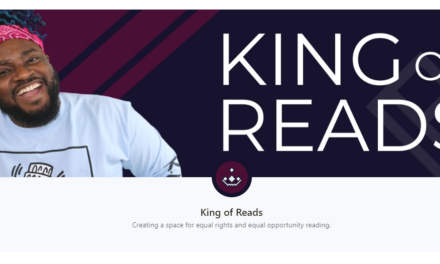In the early days of the web, most companies seeking an online presence typically needed to take a dive off Niagara Falls—in the form of old-fashioned waterfall web design. The cascading approach was often slow, sequential, and tedious, requiring every step of the project to be completed separately and individually in a linear, lengthy fashion. Then, in 2001, the Manifesto for Agile Software Development was created, espousing the benefits of an iterative, incremental, and agile process. Developers began increasingly adopting an alternative methodology—agile web development (AWD)—which involves breaking a website project up into smaller chunks that can each be finished and rolled out live one by one, instead of waiting until the entire project is completed and releasing it all at once.
Since that time, agile has become the scheme of choice for building software and websites at many companies. The “State of Performance Engineering 2015–16” report by TechBeacon revealed that two out of three organizations polled describe their company as either “pure agile” or “leaning toward agile”; only 9% are pure waterfall or leaning toward it. And a Computer Economics report published in 2017, “Agile Development Adoption and Best Practices,” shows that adoption rates are as high as 70% among large businesses.
But agile hasn’t proven to be a perfect solution. While AWD offers several advantages over waterfall and other methodologies, it has its limitations too. Consider that, per the aforementioned Computer Economics report’s findings, many companies that have embraced agile aren’t using it consistently; for example, 55% of midsize organizations that have adopted agile only employ it 22% of the time.
Whether you’re preparing to take your first iterative plunge or want to improve your familiar AWD processes, it’s important to analyze agile’s capabilities and limitations and pursue strategies that can produce better results on the web for you and your audience.
Why AWD Still Makes Sense
Ask Eugenio Alvarez, director of software development for MotionPoint, and he’ll tell you that AWD remains the go-to approach for many companies. “Not only does it improve website and software delivery success rates, but it increases productivity, allows developers to be nimble, and facilitates IT synergy,” says Alvarez, who is a certified ScrumMaster.
Scrum, by the way, is the most common AWD framework; it uses short, pre-defined development cycles (“sprints”) and brief daily meetings (“stand-ups”) in order to break down a project into achievable goals and release finished portions of the project quicker. Alvarez says when Scrum is used on a project by his team, a stand-up (typically 15 minutes each day of the project) involves no more than nine people. This enables everyone to speak and help answer three questions designed to improve outcomes. To assist in meeting the spring goal, the team asks three questions: 1) What did I do yesterday? 2) What will I do today? 3) Are there any impediments standing in the way?
If you enjoy today’s modern, immersive web and its power to keep users engaged (despite an increasingly distracting media and technology environment vying for the same eyeballs), give some props to AWD. “AWD has played a significant role in the innovative web experiences we have today and generally leads to improved user-centric websites and applications,” says Nicholas Yee, VP of operations for the indoor mapping company Jibestream.
“One major benefit of the agile approach is that you can get a small piece of the work in front of real users early and get their feedback, which can guide your work,” says Andrea Fryrear, president and lead trainer for AgileSherpas. “This is a much lower risk way to develop almost anything—from websites to books. If you’re going down the absolute wrong path, you can find out after just one or two small pieces have been released instead of learning about your failure at the end of a long, expensive redevelopment project.”
Case in point: Imagine you’re a pet retailer that wants to create a new content hub about fish because you observe ample traffic on your website derived from searches about fish. Fryrear says an AWD approach would create a basic landing page with basic content, introduce it to your audience, and gauge their response. “If they engage with the content and make a lot of purchases after viewing it, then you’re on the right track and you can expand it, enhance the functionality over time, etcetera. If it bombs, you’ve only invested a small amount of time in it and can abandon the idea,” says Fryrear.
Conversely, a waterfall approach to this project would have called for completing the content hub in its entirety before posting any of it. If users aren’t impressed and site visits take a dive, you’ve sunk a lot of time and resources into a loser.
“Waterfall’s linear approach allows progress to be easily measured, because the full scope of the work is known in advance. But a customer may not see what will be delivered until it’s almost finished. By that time, changes can be difficult and costly to implement,” Alvarez says. “The likelihood of failure is also greater for this method because you can’t plan for unexpected issues.”
By contrast, AWD enables companies to challenge their assumptions about a web project at every stage of the process. “You make a number of smaller decisions and check the market to see if your audience approves,” says Yee. “If their reaction is positive, great. If not, iterate.”
Flaws in the System
However, AWD isn’t a foolproof methodology, and it won’t work for every organization. Agile requires an open and trusting relationship between the team and the customer. “Agile adds risk because there are less formal agreements as to what will be delivered. This ambiguity is very hard for some companies, teams, and customers to move beyond,” Chuck Stricker, principal business analyst for Rouler Group, says.
Another AWD risk is that your site or app “can proliferate faster than security teams can protect them, exposing it to threats,” says Ari Weil, VP of product marketing for Akamai. “This can compromise sensitive user data, which could result in significant brand damage and erosion of customer trust.”
AWD also may not work as well when you have an expansive squad and/or collaborators on the other side of the globe. “Agile may be less appropriate for very large teams or complex projects that are impossible to manage by a few product experts or a self-organizing crew,” says Werner Krebs, CEO of Acculation.
Krebs worked with a firm that outsourced its AWD tasks to developers who worked in a different country, with a 12-hour time difference. That offshore team never adjusted to the U.S. time zone difference, which often led to 24-hour delays in fixing even the simplest bugs. The firm learned the hard way that waterfall was a better method under these circumstances. “If your offshore developers won’t read your bug reports until 12 hours later, it’s better to give them a detailed, formal spec to work with so they can work on their own,” says Krebs.
Another agile drawback is that it can be used as an excuse to avoid doing the dirty work. For instance, Yee notes, tasks such as documentation, testing, and training can be deemed unnecessary by team members who don’t fully understand the principles and framework of agile. Lastly, when not implemented effectively, AWD can feel topsy-turvy. “If your team is not collaborating, having daily stand-ups, and holding retrospective meetings where they transparently ask, ‘What can we do better?’ then agile can seem like chaos,” says Daniela Field, senior solutions consultant for Mendix.
Making Agile Work for You
Despite these challenges, experts caution against abandoning agile. Instead, try tweaking and adapting this iterative methodology as needed to work to your advantage. For Cait Porte, SVP of product and customer experience for Zmags, that meant implementing a “wagifall” strategy that combines the best elements of waterfall and agile. “With this approach, you can define some of the project up front but tackle [it] in chunks to get that feedback you desire and to be able to iterate and learn from that,” suggests Porte. She notes that 24% of companies that responded to the aforementioned TechBeacon survey use an agile/waterfall hybrid plan of attack.
Samantha Osburn, CEO and executive producer for the video production company AMP, agrees, adding that “wagifall” can work for more than websites. “These frameworks are helpful to get started. But don’t hesitate to customize a workflow that works for your team,” says Osburn. “In my industry, we operate with both waterfall and agile methods. For example, we must have a script before we can create the budget. But after that, once we get to pre-production, we go into an agile sprint to knock out all the details so that we’re ready to shoot.”
To lessen the odds of agile failure, aim to test the product consistently from the start. “Having the capacity to focus first on developing automated testing, both at the unit and system levels, and adding automation to the integration and deployment process is the first requirement,” Weil says.
Additionally, aim to deliver value to your customers early and often, Porte recommends. “And be willing to take some risks. That could mean developing a prototype of a webpage that you get out to a small group of customers—a prototype that you can test with those customers to make sure you’re going down the right path,” adds Porte.
Also, be prepared to go slow at first in order to go faster later. “Adopting agile doesn’t mean you suddenly snap your fingers and everything happens quickly. Realize that it’s going to take some time to adjust,” says Porte.
Assigning key agile tasks to a project’s point person may ensure better results, as well. “It’s important to clearly define a designated ScrumMaster to lead the charge. If there’s an issue with communication or delineating tasks, you can maximize efficiency by knowing exactly who to contact for clarification rather than chasing down answers from several people or waiting until the next stand up meeting,” says Osburn.
Sending staffers to the AWD classroom is a good idea too. “If you want to implement agile, invest in good people and get them trained in the process,” says Field, who recommends pursuing ScrumMaster training and certification via groups such as the Scrum Alliance. “Empower employees and give them the tools to succeed, and appoint champions within your organization who already think in an agile way.”
Agile on the Horizon
The good news about investing in agile development? It’s an approach that’s not going away anytime soon. “AWD as a methodology will continue to improve as technology and tools improve, and its core tenets should remain durable into the future,” Weil believes. Others are likewise convinced that AWD will only get better as time passes.
“I think it will evolve to be more versatile and flexible, and it will greatly benefit from more non-developers beginning to use it and infuse it with a new round of creativity and innovation,” says Fryrear. Still, it’s wise to keep your options open and not put all your eggs in one web-development-approach basket. “I welcome the opportunity to learn from any emerging methodology and determine how to best leverage its concepts with my team,” Yee says.






